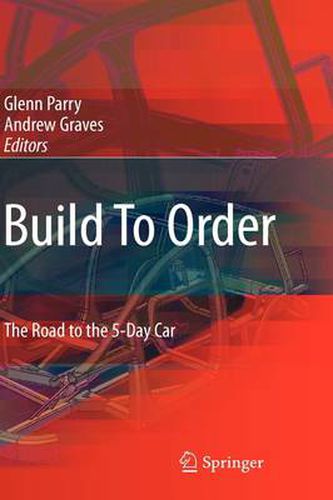Readings Newsletter
Become a Readings Member to make your shopping experience even easier.
Sign in or sign up for free!
You’re not far away from qualifying for FREE standard shipping within Australia
You’ve qualified for FREE standard shipping within Australia
The cart is loading…






This title is printed to order. This book may have been self-published. If so, we cannot guarantee the quality of the content. In the main most books will have gone through the editing process however some may not. We therefore suggest that you be aware of this before ordering this book. If in doubt check either the author or publisher’s details as we are unable to accept any returns unless they are faulty. Please contact us if you have any questions.
Over the past 100 years the European Automotive Industry has been repeatedly challenged by best practice. First by the United States, through the development of ‘mass production’ pioneered by Henry Ford and more recently by ‘lean production techniques’ as practised by the leading Japanese producers, particularly Toyota. It has consistently risen to these challenges and has shown it can compete and even outperform its competitors with world-class products. However, the European - dustry is now faced with growing competition and growth from new emerging low-cost countries and needs to re-define its competitive advantage to remain at the forefront of the sector. Automotive growth is driven by two factors, new m- kets and new technologies. Global competition is increasing, with technology and product differentiation becoming the most important sales factors, but with c- tinued cost pressure. Within the market the winners will be more profitable and the losers will disappear. The Automotive Industry makes a significant contribution to the socio-economic fabric of the European Union. Manufacturing output represents EURO700 billion and research and development spending EURO24 billion. European automotive suppliers number 5000 member companies and represent 5 million employees and generate EURO500 billion in revenues. These are significant figures that generate wealth and high value employment within the EU. European firms must consistently improve their competitive position to ensure that the industry does not migrate to growing new markets.
$9.00 standard shipping within Australia
FREE standard shipping within Australia for orders over $100.00
Express & International shipping calculated at checkout
Stock availability can be subject to change without notice. We recommend calling the shop or contacting our online team to check availability of low stock items. Please see our Shopping Online page for more details.
This title is printed to order. This book may have been self-published. If so, we cannot guarantee the quality of the content. In the main most books will have gone through the editing process however some may not. We therefore suggest that you be aware of this before ordering this book. If in doubt check either the author or publisher’s details as we are unable to accept any returns unless they are faulty. Please contact us if you have any questions.
Over the past 100 years the European Automotive Industry has been repeatedly challenged by best practice. First by the United States, through the development of ‘mass production’ pioneered by Henry Ford and more recently by ‘lean production techniques’ as practised by the leading Japanese producers, particularly Toyota. It has consistently risen to these challenges and has shown it can compete and even outperform its competitors with world-class products. However, the European - dustry is now faced with growing competition and growth from new emerging low-cost countries and needs to re-define its competitive advantage to remain at the forefront of the sector. Automotive growth is driven by two factors, new m- kets and new technologies. Global competition is increasing, with technology and product differentiation becoming the most important sales factors, but with c- tinued cost pressure. Within the market the winners will be more profitable and the losers will disappear. The Automotive Industry makes a significant contribution to the socio-economic fabric of the European Union. Manufacturing output represents EURO700 billion and research and development spending EURO24 billion. European automotive suppliers number 5000 member companies and represent 5 million employees and generate EURO500 billion in revenues. These are significant figures that generate wealth and high value employment within the EU. European firms must consistently improve their competitive position to ensure that the industry does not migrate to growing new markets.